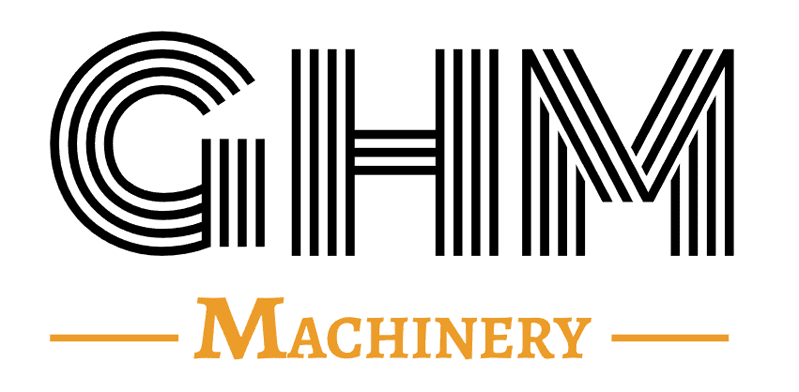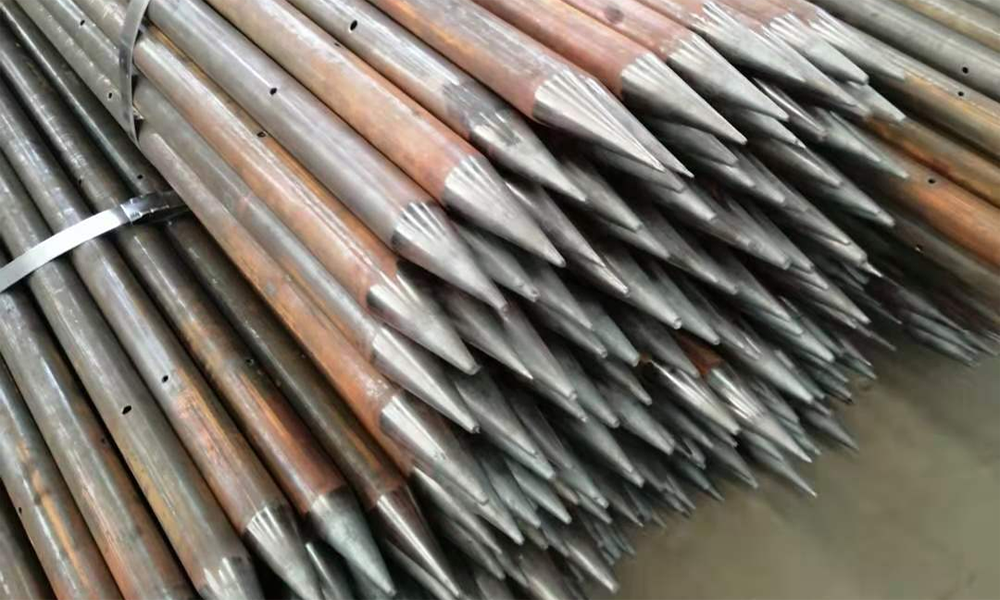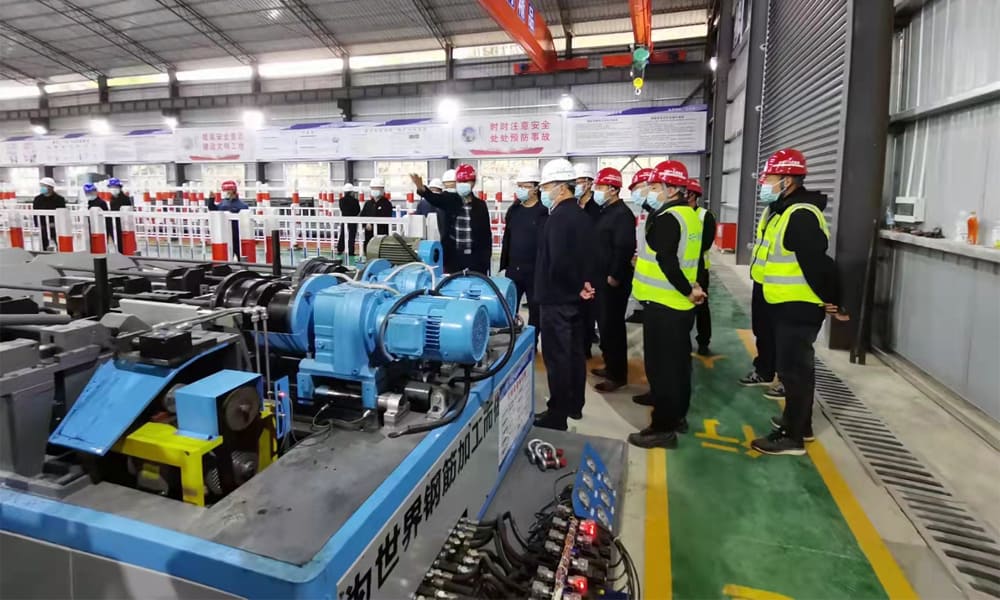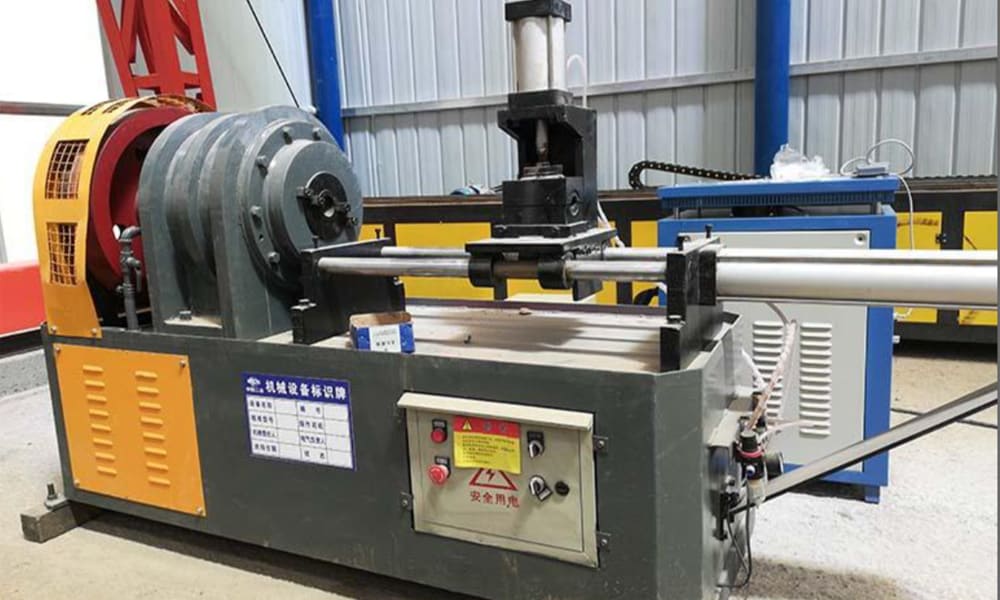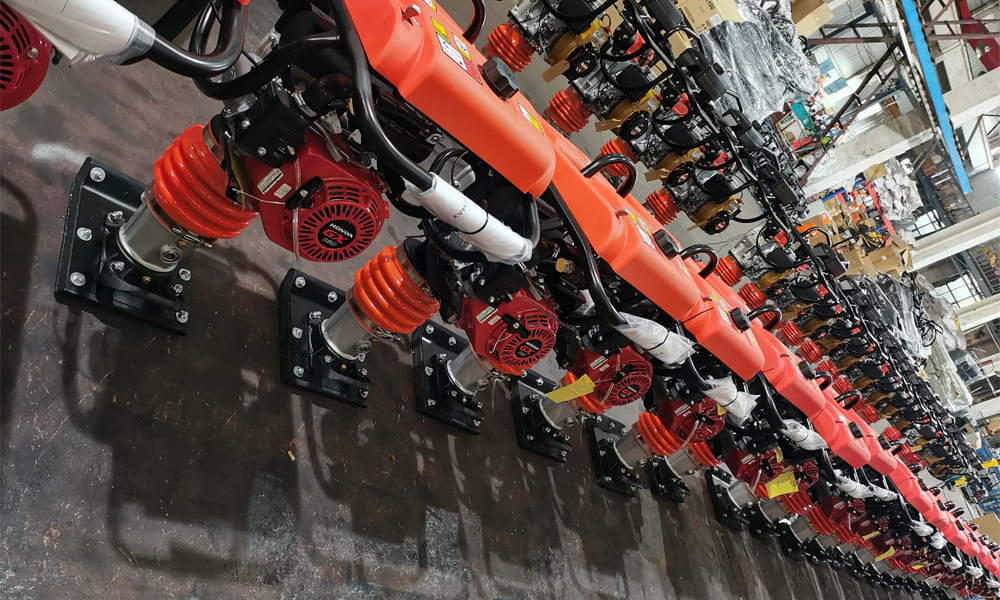Pipe tipering machine Features:
- Simple Structure: Pipe-tipering-machine Easy to use with a well-made, lightweight, and aesthetically pleasing design.
- No Welding Required: Saves material and performs well in repeated assembly and disassembly.
- Increasing Usage: Due to its simplicity and efficiency, ferrule-type pipe joints are becoming more common in oil-based installations.
Installation Requirements:
- Pre-tightening: Ensure the end face of the pipe is flush, and the cutouts are deburred.
- Coaxial Alignment: Keep the pipe and joint coaxial.
- Appropriate Pre-tightening Force: The blade should just embed in the outer wall of the pipe.
- Avoid Lateral Forces: Prevent lateral forces on the pipe.
Tunnel Pipe tipering machine
The Tunnel Pipe Tapering Machine significantly improves production efficiency on engineering sites and revolutionizes existing construction technologies. It automates the cumbersome construction steps involved in small conduit tip forming, making the process more efficient and aesthetically pleasing. Only one laborer is required to meet the grouting needs for small conduits on construction sites. This machine, combined with a tube shrinking machine, integrates multiple functions, realizing multi-functionality in one device.
Processing Range and Application
Advance Small Pipe:
- Specifications: Generally around 6 meters in length, with a 5mm wall thickness and a 42mm diameter.
- Purpose: Used to consolidate broken surrounding rock, forming a cohesive structure before proceeding to the next step.
- Usage: When geological conditions at the tunnel entrance are poor, such as sand, broken rocks, or loess.
Pipe Shed:
- Specifications: Typically 20-30 meters in length, with a 3.5mm wall thickness and a 108mm diameter.
- Purpose: Used in poor geological conditions, both at the cave entrance and within the cave, especially where there is significant roof collapse.
Features of Small Pipe Grouting
- Simple Construction Process: Easy to operate, safe, with quick layer reinforcement, minimal slurry loss, and low cost.
- Auxiliary Means: Used to prevent collapse and subsidence in underground projects.
- Design Adaptability: Parameters vary based on geological conditions, tunnel size, and support structure.
Scope of Application
Small pipes are ideal for unbonded sand and gravel layers with poor self-hiding ability. They are used in excavated soil layers that should not be exposed for long periods, adhering to the principle of supporting before excavating. Small pipe grouting is also suitable for various temporary stratum reinforcements.
Wide Application of Grouting Pipe
Grouting pipes are widely used across industries such as petrochemical, electric power, tunnels, roads, bridge engineering, subways, and high-speed rail.
Advantages:
- Surface Quality: Excellent internal and external finish.
- Complex Cross-Sections: No oxide film after cold rolling.
- Pressure Resistance: Can withstand greater pressure without cracking or deformation.
- Enhanced Performance: Denser metal structure.
Advantages of Grouting Pipe
- No Special Equipment Needed: Flexible grouting times.
- Simple Installation: Grouting pipes can be cut to length on-site.
- Durability: Maintains a permanent seal after grouting.
- Pressure Efficiency: Operates effectively at low pressures (0.2-0.4 MPa).
- No Damage to Concrete: Ensures structural integrity during installation and grouting.
The Tunnel Pipe Tapering Machine and its components streamline the construction process, ensuring efficiency, safety, and cost-effectiveness, making them indispensable in modern engineering project.
